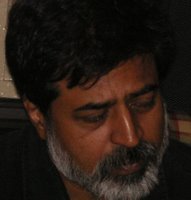Ubi Jus Ibi Remedium Or, The Slippery Slope of Indian Human Rights Jurispridence
Recognising the overwhelming importance of the Latin maxim cited above, the normative basis of fundamental rights jurisprudence in the country, a remedy for the enforcement of these rights is incorporated in chapter-3 of the Constitution, along with the guarantees of these rights. Under Article 32 any person whose fundamental rights have been violated can move the Supreme Court directly and, as a matter of right, for an appropriate writ. Similarly, Article 226 of the Constitution empowers the High Courts of the country to issue writs in protection of these rights.[1] In this manner, the remedy is symbiotically linked with the guarantees of life and personal liberty, under Article 21 of the Constitution.
Article 21, guarantees the fundamental right of life and liberty. It reads as follows—
“No person shall be deprived of his life or personal liberty except according to procedure established by law”[2]
The crux of this guarantee, the expression “procedure established by law” has been the subject of judicial interpretation from the inception of the Constitution. The Supreme Court started from a narrow, pedantic interpretation of this phrase in the AK Gopalan case.[3] In that case, a majority of the judges of the Court held that the word “law”, as used in the phrase, meant “State-made law” and, was not—
“an equivalent of law in the abstract or general sense embodying the principles of natural justice”.
Thus, for example, if the parliament passed a Bill permitting the State to carry out executions without any judicial process, and if such a Bill received the assent of the President of India, it would be “law” and the procedure prescribed in such law would be “procedure established by law”, under which the State would be entitled to conduct extra judicial executions. In an attempt to allay the alarming implications of such an exposition, one of the judges to that decision attempted to clarify the Court’s stand by stating that the law so made must be—
“the ordinary well established criminal procedure, i.e., those settled usages and normal modes of procedure sanctioned by the Criminal Procedure Code, which is the general law of criminal procedure in this country”.[4]
However, this wholly defective interpretation was abandoned by a series of decisions since the 1970s, culminating in the judgement in the Maneka Gandhi case.[5] Thus, it was no longer enough to claim that a law was validly passed by the parliament and had received the assent of the President. For a law to be valid it had, also, to pass the test of being in consonance with the “basic structure” of the Constitution. If a law violated this “basic structure” then it was not valid law, even if validly passed by the parliament or a State legislature. The whole of the chapter III of the Constitution, containing the Fundamental Rights guaranteed under it, has been held to be part of this “basic structure”. By this way, the meaning of the phrase “procedure established by law” was been transformed to mean procedure that is just, fair and proper; in accord with the objects underlying the establishment of the Indian republic: and, not just procedure prescribed by the parliament.
The Maneka Gandhi case also marked the overturning of the notion that the Fundamental Rights must be viewed as separate, watertight compartments. In other words, the pre Maneka Gandhi position was that in order to be struck down a law or, an executive action must directly violate the specific right mentioned in the complaint. The indirect impact of the law or order upon that right, even when it flowed as an inevitable consequence, was not to be considered by the court, while deciding upon the complaint. The Court relied upon Article 14 of the Constitution to develop a more holistic view. Article 14 states that—
“The State shall not deny to any person equality before the law or the equal protection of the laws within the territory of India.”
Calling the Article ‘a founding faith of the Constitution’ and ‘the pillar on which rests securely the foundation of our democratic republic’ the Court quoted from an earlier judgement,[6] to say that—
"… equality is antithetic to arbitrariness. In fact equality and arbitrariness are sworn enemies; one belongs to the rule of law in republic, while the other, to the whim and caprice of an absolute monarch. Where an act is arbitrary, it is implicit in it that it is unequal both according to political logic and constitutional law and is therefore violative of Article 14"
It went on to hold that—
“The principle of reasonableness, which legally as well as philosophically, is an essential element of equality or non-arbitrariness pervades Article 14 like a brooding omnipresence…”
Over the next two decades, the Court used the “brooding omnipresence” doctrine to develop the thesis of its obligation to do justice in ‘public law’, as distinct from the remedies available to aggrieved persons under the normal legal processes, which are called ‘private law’ remedies. The Nilabati Behara[7] case and the DK Basu[8] case, two cases that have become part of global human rights jurisprudence, have emerged out of this process.
The Nilabati Behara case held that the State has a ‘duty of care’ to ensure that the citizen in its custody is not deprived of his right to life. It held that the duty in this regard, ‘is strict and admits of no exceptions’. In other words—
“The wrongdoer is accountable and the State is responsible if the person in custody of the police is deprived of his life except according to the procedure established by law.”
Expounding on the evolving interpretation of Article 32 of the Constitution, the Court said that the wide powers given to it by that Article impose upon it a corresponding constitutional obligation to forge such new tools ‘for doing complete justice and enforcing the fundamental rights guaranteed in the Constitution’. It said that it was no longer enough to relegate those aggrieved by a violation of their fundamental rights to the “normal” civil law remedies. Further, making it clear that the powers of the High Courts were co-extensive with its own, the Court held that—
“This Court and the High Courts, … have not only the power and jurisdiction but also an obligation to grant relief in exercise of its jurisdiction under Articles 32 and 226 of the Constitution to the victim or the heir of the victim whose fundamental rights under Article 21 of the Constitution of India are established to have been flagrantly infringed by calling upon the State to repair the damage done by its officers …[9]
The decision in the DK Basu case followed a few years later, in December 1996. This is the only decision that addresses the issue of death in custody/ disappearance from custody in general terms, as something that pervades law enforcement in India. It represents a long overdue acknowledgement of the state of affairs. The judgement laid down binding and enforceable guidelines to prevent violation of the fundamental rights of the citizens of India by the law enforcement agencies. The Supreme Court declared that a failure to comply with the guidelines laid down by it would tantamount to contempt of court and, would be punishable as such. Taking the Supreme Court at its word, some lawyers in Kashmir filed contempt petitions, instead of petitions for a writ of habeas corpus. Besides, the DK Basu decision was invoked in many cases, where a regular petition for a writ of habeas corpus was filed, to buttress the argument that the action of the security forces was illegal and not permissible.[10]
The principle of stare decisis requires that subordinate courts, including the High Courts, must always take their cue from the superior court. The Indian supreme court must be found wanting even if this principle is limited only to the formal pronouncements of that court. However, in the real world it is not just the formal decisions of the Supreme Court that delineate the jurisprudence. The attitude of the Court is read from the totality of its pronouncements and, interpreted in the overall context in which the nation subsists.
In the DK Basu case, even as the Court held that ‘State terrorism is no answer to combat terrorism’, it attempted to ‘balance’ the needs of the State with those of ‘life and liberty’. It referred to the fact that the ‘police in India have to perform a difficult and delicate task’. In a manner that typifies its approach to human rights jurisprudence, it mentioned—
“the deteriorating law and order situation, communal riots, political turmoil, student unrest, terrorist activities, and among others the increasing number of underworld and armed gangs and criminals”
to assert that ‘freedom of an individual must yield to the security of the State’. Resorting to other Latin maxims, it implicitly declared that the principles contained in these maxims must be read into the guarantees contained in the fundamental rights chapter of the Constitution. The two principles that the Court thus elevated state that—
‘The safety of the people is the supreme law’ and ‘Safety of the state is the supreme law’.[11]
Thus, on the one hand the Court held that ‘The cure cannot … be worse than the disease itself’, approvingly citing the decision in Miranda Vs. Arizona (384 US 436), where the American Supreme Court held that the argument of “society’s need” cannot be used to abridge the guaranteed rights of the individual. On the other hand, in the same judgement the Court adverted to criticism in “certain quarters” that increased enforcement of fundamental rights, would make it difficult to detect crimes committed by hardened criminals and that if the court were to lay to much of emphasis on protection of the fundamental rights and human rights such criminals would go scot-free; with the result that crime would go unpunished and, in the ultimate analysis, society would suffer. The Court called this concern “genuine” and called for—
“a balanced approach … to meet the ends of justice”.[12]
The Latin maxims cannot be faulted. The fundamental rights chapter of the Constitution is premised on the first one and, the nation-state paradigm, which the second maxim seeks to exalt, underpins the entire edifice of the Rule of Law in modern times. However, it is not possible to assume that the Court is unaware of the message that such observations will convey to the State and its agencies in a country where impunity is the norm and, where is it routine to invoke the public weal and, threats to the ‘sovereignty and integrity’ of the nation to perpetrate “flagrant violations of human rights on a mass scale”.[13] In such a climate the Court’s remarks can and, have been construed by the police and other agencies engaged in internal security duties as a continuing licence to act in breach of the law.
Not surprising, given this ambivalence on the part of the Court, custodial killings and disappearances have been an endemic feature of post independence India. Equally not surprising there is, virtually, no jurisprudence connected with the violation of the right to life, in the country. This is not to say that the Supreme Court has condoned each and every case of death in custody. However, its attitude has been clearly contingent upon the attendant circumstances. In cases of custodial killing by the police, in non-insurgency situations, cases do get registered against the accused police officers. And, when such matters come to the Supreme Court it, does take a stern view of the matter.[14] But when it comes to the armed forces of the Union and/ or the other security forces ‘battling insurgency’, the Court has consistently avoided dealing with culpability and, the punishment for it. Sarcasm is the most that its ire extends to. For example, in the Sebastian Hongray case, the Supreme Court allowed itself to be trapped into challenging the temerity of the officials in lying to it, failing to address the lawlessness that underlay these lies.[15] For this reason the Court’s outrage became a display of ineffective umbrage over ‘lese majesty’ of its self.
In these circumstances, even the “public law” remedy of compensation has become a virtual gag for shutting the possibility of enquiry into the unpalatable aspects of the counter insurgency mechanism that the country has perfected to subdue its rebellious periphery.
If the judicial remedy is a failure, the constitutional guarantees are suspect; since they subsists entirely at the mercy of the executive. We are, then, faced with a conundrum: an executive that abides by the Rule of Law does not violate the rights of the people. In such States, the judiciary is not called upon to protect the rights of the people, except occasionally. Where the executive does not respect these rights, it becomes necessary for the judiciary to intervene and to restore the balance of rights. In such States, however, more often than not, the judicial remedy is ineffective.
Though the solution to the problem posed largely lies outside the realm of judicial practice, there is much that ails the commitment of the Indian judicial system to upholding the rights to life and liberty and, the Rule of Law. It is patent that developing the necessary political resolve to rid India of this lawless, impunity will be a painful and a long drawn out process. In the meanwhile, it ill behoves the judiciary of this country to abdicate is responsibility, howsoever arduous. To quote Montesquieu—
“Law should be like death, which spares no one.”
Footnotes
[1] The remedy under Article 226 is much broader, encompassing the right to move the court for violation of all legal rights, including the fundamental rights. However, unlike in the case of Article 32, the High Court is not obliged to entertain a petition. Its jurisdiction is discretionary.
[2] Over the decades, Article 21 has become an omnibus provision, encompassing within itself everything, from the basic right to life and liberty to the right to livelihood, food, shelter, health, education, environment and much more. Interpreting the provision in ever expanding concentricities the Court has expounded that the right to life includes within itself all that forms part of a life of dignity as a civilised human being.
[3] AK Gopalan V. The State of Madras.(AIR 1950 SC 27). This case challenged the validity of a preventive detention law, on the ground that it violated Article 21.
[4] An expression vague enough to encompass almost everything that might have been done by an ingenious State apparatus over the past century of imperial rule.
[5] Maneka Gandhi V. Union of India (AIR 1978 SC 597)
[6] E. P. Royappa V. State of Tamil Nadu (1974 [4] SCC 3)
[7] Nilabati Behera V. State of Orissa and others (AIR 1993 SC 1960)
[8] AIR 1997 SC 3047
[9] The Court added that the State, “has the right to be indemnified by and take such action as may be available to it against the wrongdoer in accordance with law through appropriate proceedings”. It also stated that relief in exercise of the “public law” powers under Article 32 or 226 can be granted only once it is “established” that there has been an infringement of the fundamental rights of the citizen and no other form of appropriate redress is possible.
[10] Needless to state, invoking this judgement made no difference whatsoever to the proceedings or the outcome of these cases.
[11] Salus populi est supreme lex and Salus republicae est suprema lex.
[12] DK Basu V. State of West Bengal, supra
[13] The words used by the Supreme Court in a case alleging thousands of enforced disappearances in Punjab, upon reading the report of the investigation into these allegations by the CBI (Central Bureau of Investigation), on the orders of the Court.
[14] Most of these judgements are not in habeas corpus petitions but in cases arising out of the trial of the accused police officers. They were passed while disposing of appeals by the accused police officers, or by the State government, against their conviction/ acquittal, as the case may be.
[15] Sebastian Hongray V. Union of India, AIR 1984 SC 1026
Thursday, November 30, 2006
Saturday, September 16, 2006
Is it enough that the Prime Minister is honest?
How dire is the Indian situation? I find it difficult to gauge the truth.
On the one hand we have the "numbers" coming out every day. Infosys, Wipro, Reliance Energy, Biocon, ....... On the other, the Prime Minister announces "packages" for suicide riven Vidarbha. Where lies the truth? Is India making rapid progress towards the economic well being of its billion plus or is it down-sliding into desperate poverty?
Look at it another way: On the one hand, the ruling establishment, which, by the way, includes us, flaunts its billion plus demography as THE ASSEST of the nation; one that has catapulted us into the ranks of the great nations of the world and, virtually, into the UN Security Council. On the other, we allow the very people who make us such a great nation to die unnecessary deaths by the millions every year: female foeticide and infanticide, high infant mortality in general, high maternal mortality, starvation deaths, disease epidemics, one of the highest accident rates in the world, et al.
Do we imagine that it is only the Lakshmi Mittals and the Amartaya Sens and the Indira Nooyis that enable us to hold our heads high when we says we are Indians? No doubt they and many other "successful" Indians have helped erase the ubiquitous image of the naked, starving Indian: going around the world with a begging bowl. Perhaps that is all that we care about; how the world paints us. After all, it is only Maya.
Do we imagine that we will actually become a great nation on the strength of the handful of corporate czars, Nobel laureates, missiles and, atomic weapons? Are we labouring under the illusion that China is on the verge of becoming a great and powerful nation, whose voice is impossible to ignore because of its nuclear arsenal? Its unprecedented economic boom? A "booming economy" is only so much hot air unless it translates into a modicum of dignity for all: food in every thaali, a shirt on every back, a roof over every head.
How dire is the Indian situation? I find it difficult to gauge the truth.
On the one hand we have the "numbers" coming out every day. Infosys, Wipro, Reliance Energy, Biocon, ....... On the other, the Prime Minister announces "packages" for suicide riven Vidarbha. Where lies the truth? Is India making rapid progress towards the economic well being of its billion plus or is it down-sliding into desperate poverty?
Look at it another way: On the one hand, the ruling establishment, which, by the way, includes us, flaunts its billion plus demography as THE ASSEST of the nation; one that has catapulted us into the ranks of the great nations of the world and, virtually, into the UN Security Council. On the other, we allow the very people who make us such a great nation to die unnecessary deaths by the millions every year: female foeticide and infanticide, high infant mortality in general, high maternal mortality, starvation deaths, disease epidemics, one of the highest accident rates in the world, et al.
Do we imagine that it is only the Lakshmi Mittals and the Amartaya Sens and the Indira Nooyis that enable us to hold our heads high when we says we are Indians? No doubt they and many other "successful" Indians have helped erase the ubiquitous image of the naked, starving Indian: going around the world with a begging bowl. Perhaps that is all that we care about; how the world paints us. After all, it is only Maya.
Do we imagine that we will actually become a great nation on the strength of the handful of corporate czars, Nobel laureates, missiles and, atomic weapons? Are we labouring under the illusion that China is on the verge of becoming a great and powerful nation, whose voice is impossible to ignore because of its nuclear arsenal? Its unprecedented economic boom? A "booming economy" is only so much hot air unless it translates into a modicum of dignity for all: food in every thaali, a shirt on every back, a roof over every head.
Rule of Law: A Raison d' etre
Law is not neutral. It never was. It is backed by force and, it commands it, also. Thus, rule of law is a misnomer -deliberate or inadvertent- to the extent that it connotes an absence of force. Besides, in the 21st Century it would be the height of naiveté to subscribe to the original view about rule of law: that it is exclusively based upon reason.
Let us examine the manner in which law and/ or rule of law comes into being:
India was conquered by the British by force, not law. British made law was subsequently applied, by force. Once the law was in place, it was enforced. Reason had very little role to play. One might argue that the law was reasonable but that begs the question of: by whose lights and, even assuming this was so, what gave the British the right to force us to follow their reason. Further, it is patent that howsoever hard they had tried to convince, the British would never have managed to persuade the Indians obey their laws. Thus, rule of law was backed by force, not reason.
Look at the same thing another way: all people who are free must necessarily have the freedom to choose, for example, to obey or not to obey another’s precepts. However, the ‘freedom of choice’ argument fails in the face of the need to regulate human behaviour in the social context. A solitary human being can do what he or she wishes, without constraint or fetter. The moment there are two people, they both feel the need for norms to regulate each other’s conduct. The conventional argument champions the 'law-rule of law' paradigm by claiming that there are two possible ways in which this need can be resolved: by force, the stronger prevailing over the weaker of the two and enforcing his/ her will; or, by law, when norms would get formulated to ensure that both persons get to enjoy an equal degree of ‘freedom of choice’ with neither encroaching upon the area of the other’s choices. This argument, however, fails to recognize a third possibility, which is often the way it goes in the real world. The stronger of the two (whether physically, intellectually or emotionally) establishes an ascendancy and, using that, lays down a set of rules as being “reasonable”. Thus, not only is the other, weaker person deprived of his/ her fair share of choice-space but he/ she is also forced to acknowledge that the rules imposed are “fair”. The next time he/ she infringes any of these, so called, fair rules, she is brought to book for violating the “law”. Since the person who imposed the law in the first place was able to do so because of his/ her superior strength, it is obvious that this person would also be able to enforce a penalty for the infringement of the law. Even worse, it is obvious that the situation would be untenable if one were to hypothise a situation where the weaker of the two were allowed to stipulate the rule (or law) to be followed, since this person would not be able to enforce the law unless the stronger person allowed that to happen. In such case 'law' or 'rule of law' would remain a concession by the stronger person. It is axiomatic that a concession can be withdrawn at the will (or the whim) of the giver. In other words, the concession can never be law.
Now, why would a concept that is premised on force and, the ability of the strong to compel the weak be touted as the panacea for freedom, equality and fair play? The only reason can be that it serves the purpose of the strong, by minimizing the resistance of the weak, lessening the need to remain perpetually on guard and, reducing the task of enforcing the law. What can be better for the master than when the slave (or the subject) willingly accepts the limits upon his her freedom?
Law is not neutral. It never was. It is backed by force and, it commands it, also. Thus, rule of law is a misnomer -deliberate or inadvertent- to the extent that it connotes an absence of force. Besides, in the 21st Century it would be the height of naiveté to subscribe to the original view about rule of law: that it is exclusively based upon reason.
Let us examine the manner in which law and/ or rule of law comes into being:
India was conquered by the British by force, not law. British made law was subsequently applied, by force. Once the law was in place, it was enforced. Reason had very little role to play. One might argue that the law was reasonable but that begs the question of: by whose lights and, even assuming this was so, what gave the British the right to force us to follow their reason. Further, it is patent that howsoever hard they had tried to convince, the British would never have managed to persuade the Indians obey their laws. Thus, rule of law was backed by force, not reason.
Look at the same thing another way: all people who are free must necessarily have the freedom to choose, for example, to obey or not to obey another’s precepts. However, the ‘freedom of choice’ argument fails in the face of the need to regulate human behaviour in the social context. A solitary human being can do what he or she wishes, without constraint or fetter. The moment there are two people, they both feel the need for norms to regulate each other’s conduct. The conventional argument champions the 'law-rule of law' paradigm by claiming that there are two possible ways in which this need can be resolved: by force, the stronger prevailing over the weaker of the two and enforcing his/ her will; or, by law, when norms would get formulated to ensure that both persons get to enjoy an equal degree of ‘freedom of choice’ with neither encroaching upon the area of the other’s choices. This argument, however, fails to recognize a third possibility, which is often the way it goes in the real world. The stronger of the two (whether physically, intellectually or emotionally) establishes an ascendancy and, using that, lays down a set of rules as being “reasonable”. Thus, not only is the other, weaker person deprived of his/ her fair share of choice-space but he/ she is also forced to acknowledge that the rules imposed are “fair”. The next time he/ she infringes any of these, so called, fair rules, she is brought to book for violating the “law”. Since the person who imposed the law in the first place was able to do so because of his/ her superior strength, it is obvious that this person would also be able to enforce a penalty for the infringement of the law. Even worse, it is obvious that the situation would be untenable if one were to hypothise a situation where the weaker of the two were allowed to stipulate the rule (or law) to be followed, since this person would not be able to enforce the law unless the stronger person allowed that to happen. In such case 'law' or 'rule of law' would remain a concession by the stronger person. It is axiomatic that a concession can be withdrawn at the will (or the whim) of the giver. In other words, the concession can never be law.
Now, why would a concept that is premised on force and, the ability of the strong to compel the weak be touted as the panacea for freedom, equality and fair play? The only reason can be that it serves the purpose of the strong, by minimizing the resistance of the weak, lessening the need to remain perpetually on guard and, reducing the task of enforcing the law. What can be better for the master than when the slave (or the subject) willingly accepts the limits upon his her freedom?
Labels:
India,
Justice,
Post post-modern,
Power,
Rule of Law,
The Sovereign State
Subscribe to:
Posts (Atom)










